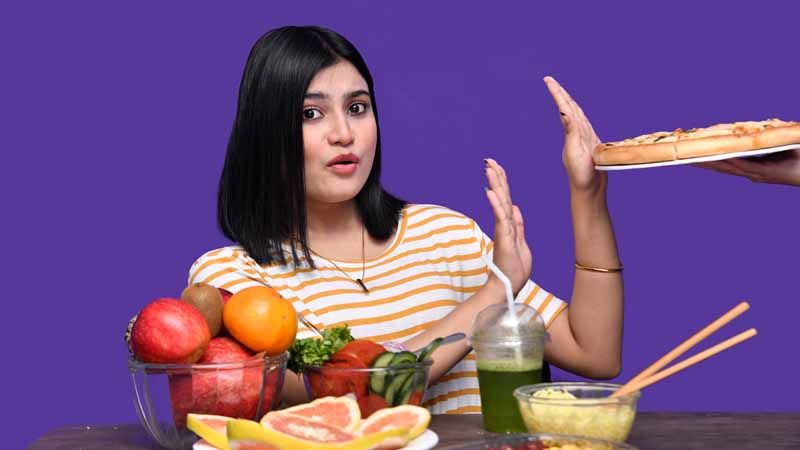What Is Good To Eat During Ganesh Chaturthi Pooja?
- 13 months ago
Ganesh Chaturthi, the festival honoring Lord Ganesha, is celebrated with grand festivities across India. Central to this celebration is the preparation and offering of various traditional foods during the pooja (ritual worship). These dishes are offered to Lord Ganesha before being shared with family and friends. The essence of this festival lies in devotion, spirituality, and, of course, the delicious food.
If you're wondering what’s good to eat during Ganesh Chaturthi Pooja, this guide will walk you through some of the most traditional and significant dishes prepared during this auspicious time. These foods hold cultural importance and are believed to be some of Ganesha’s favorites.

Foods to Offer Lord Ganesha
Lord Ganesha is known to have a fondness for certain foods, particularly sweet delicacies. Here are some of the most commonly prepared and offered foods during the pooja:
1. Modak: Lord Ganesha’s Favorite
Modak is the most iconic and beloved sweet during Ganesh Chaturthi. Lord Ganesha is often referred to as Modakpriya (the one who loves modak), and no pooja is considered complete without offering this delicacy.
Types of Modak:
- Ukadiche Modak (Steamed): A traditional Maharashtrian dish, made from rice flour and filled with jaggery and grated coconut.
- Fried Modak: Crisp and golden, these are deep-fried versions made from wheat or refined flour and stuffed with sweet fillings like coconut, jaggery, and dry fruits.
- Chocolate Modak: A modern twist, combining chocolate with traditional fillings.
Why It’s Good: Modaks are made with simple, natural ingredients like coconut, jaggery, and rice flour, offering a blend of sweet flavors and a nutritious treat with iron and healthy medium chain triglycerides for the festival.
2. Puran Poli: A Festive Staple
Puran Poli is a stuffed flatbread made during Ganesh Chaturthi, particularly in Maharashtra and Karnataka. It's made by stuffing a dough of wheat or maida (refined flour) with a mixture of chana dal (split chickpea) and jaggery, flavored with cardamom and nutmeg.
Why It’s Good: High in protein and fiber due to chana dal, this dish provides energy and is a great blend of sweet and savory. Jaggery is a healthier alternative to sugar, making it a more nutritious option.
3. Ladoo: A Symbol of Prosperity
Ladoos are another key offering during Ganesh Chaturthi and are believed to symbolize prosperity and happiness. Different types of ladoos can be prepared, such as:
- Besan Ladoo: Made from roasted chickpea flour, ghee, and sugar, flavored with cardamom.
- Coconut Ladoo: A quick and easy sweet made with fresh or desiccated coconut, condensed milk, and cardamom.
- Rava Ladoo: Made with semolina (rava), sugar, and ghee, offering a slightly grainy texture and sweet taste.
Why It’s Good: Ladoos are often packed with ghee, considered a healthy fat and ingredients like chickpea flour and coconut provide energy while keeping the dish rich in flavor.
Also try: Oats and Dry Fruit Ladoo
4. Kheer: A Classic Dessert
Kheer, known as Payasam in South India, is a must-have dessert during Ganesh Chaturthi Pooja. It is made with rice, milk, sugar, and flavored with cardamom, saffron, and garnished with nuts like almonds and cashews. Variations include sabudana kheer (made with tapioca pearls) and semolina kheer.
Why It’s Good: Milk-based kheer is rich in calcium and protein, while the addition of nuts provides healthy fats and added texture. It’s a comforting dish that adds sweetness to the celebrations.
5. Sabudana Khichdi: A Fasting-Friendly Dish
If you are fasting during Ganesh Chaturthi, Sabudana Khichdi is a popular dish made from soaked sabudana (tapioca pearls), cooked with peanuts, green chilies, and tempered with cumin seeds.
Why It’s Good: Sabudana is a source of carbohydrates, providing energy during fasts, and peanuts add protein and healthy fats to balance the meal.
6. Rice Dishes: From Lemon to Coconut Rice
Various rice dishes are also made during Ganesh Chaturthi, as rice is a staple in many Indian households.
- Lemon Rice: Tangy and flavorful, made with rice, lemon juice, turmeric, and mustard seeds.
- Coconut Rice: Lightly flavored rice with coconut, curry leaves, and spices.
Why It’s Good: Rice is a versatile grain and provides carbohydrates for energy, while the addition of ingredients like coconut and lemon enhances both flavor and nutritional value.
7. Fruits: Fresh and Sacred Offering
No pooja is complete without offering fresh fruits. Bananas, apples, pomegranates, and grapes are common fruits used in the offerings.
Why It’s Good: Fruits are naturally sweet and hydrating, offering vitamins and minerals. Including them during Ganesh Chaturthi ensures a balance between heavier, cooked dishes and light, refreshing options.
Foods to Avoid During Ganesh Chaturthi Pooja
While preparing offerings for Lord Ganesha and meals for the festival, it’s important to keep in mind the foods that are traditionally avoided during this sacred time. The focus is on purity, so certain ingredients and foods are restricted.
1. Onion and Garlic
- Avoid tamasic foods: In many Hindu rituals, foods considered tamasic (which increase lethargy or impurity) are avoided. Onion and garlic are classified as tamasic, so they are generally not used in dishes prepared for Ganesh Chaturthi Pooja.
2. Meat and Fish
- Follow a vegetarian diet: Ganesh Chaturthi is a time for purity, devotion, and abstaining from violence. Non-vegetarian foods, including meat, fish, and eggs, are strictly avoided during the pooja and the 10-day festival.
3. Alcohol
- Abstain from intoxicants: Alcohol and other intoxicants are strictly prohibited during the pooja. Consuming alcohol during Ganesh Chaturthi is seen as disrespectful and against the spirit of the festival.
4. Packaged or Processed Foods
- Opt for fresh and homemade: Processed foods, which may contain preservatives or artificial flavors, are typically avoided. Instead, devotees prepare fresh, homemade dishes with natural ingredients as offerings to Lord Ganesha.
5. Excessive Spices
- Avoid too much heat: The idea of simplicity and purity extends to the type of spices used in cooking. Dishes prepared during Ganesh Chaturthi should not be overly spicy. Mild spices that promote digestion and balance are preferred.
Final Thoughts: Eating with Devotion
Ganesh Chaturthi is a festival that celebrates the divine and reflects the deep connection between food and spirituality in Indian culture. The offerings prepared for Lord Ganesha are an expression of devotion, and the foods consumed during this time are symbolic of purity, love, and reverence.
When planning your meals and offerings for Ganesh Chaturthi, remember to focus on fresh, homemade foods that align with the essence of the festival. Keep in mind the foods to avoid, and ensure that all preparations are made with love and care, as it is believed that Ganesha accepts offerings made with pure devotion.1.









